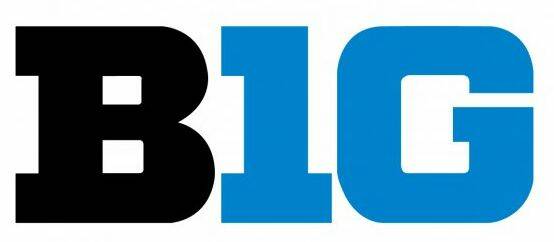
INDIANAPOLIS — The Big Ten is now the Big Eighteen. Although it won’t be called that, the arithmetic tells the story.
With the addition of UCLA, Southern Cal, Oregon and Washington to the Big Ten – and on the face of it that sounds fairly ridiculous – this is not your grandfather’s league.
It’s a new era in college football. Teams identified for generations with certain conferences became freelancers, programs for sale to the highest bidder to create super-conferences.
Television money and links to post-season bowl games are where the money is and money, as is so often the case, rules. To be a player, to be a challenger in the 2020s, a school must be able to spend as lavishly as it can to woo and retain athletes.
 Freedman
Freedman
The Name, Image and Likeness rules allowing athletes to be paid for their allegiance to a team are only a couple of years old, but it has become startlingly clear how that is changing the college sports landscape.
Forget scholarships covering books, tuition and housing, top athletes want to know how much they can make beyond that by signing up with a school. Compound this with lax NCAA transfer rules with anybody being able to transfer anywhere without a penalty of sitting out a year and being a college athlete is not much different than being a pro athlete now, except for some pesky requirements about going to class.
The Big Ten football media days were recently conducted at Lucas Oil Stadium, with coaches from all million or so Big Ten teams present and a few athletes from each school showing up.
What became clear fairly quickly is that this is all a whole new world, even for coaches. They can turn over the roster from a losing team virtually overnight and they will be expected to do so if their team doesn’t win.
Indiana has a 100-year history of losing, culminated with the recent end of the Tom Allen era, but new coach Curt Cignetti will be playing under different, and presumably advantageous, rules.
Cignetti was hired very swiftly after Allen was canned and after lifting comparatively unheralded James Madison into the national conversation with an 11-2 record. Under the new transfer portal rules, and with an uncertain future staring at them after losing their coach, incumbent Indiana players wondered about their football and school lives.
One after another they put their names on transfer lists. They departed for other programs, or, even if they wished to stick around Bloomington they may not have been invited to do so by Cignetti.
Cignetti talked of his own nervousness for a week or so having very few players, then, within three weeks of limited sleep, aggressive selling, and talking up good angles about IU, he suddenly had a full roster. Many players followed him from James Madison in Virginia, which speaks well for their loyalty and their impression of the man. Many seemed to appear out of thin air at Indiana after playing up to four seasons at some other school.
This hurry-up work that comes under the heading of fast rebuilding, brought in something like 38 new guys and Cignetti said there are 32 players on the roster who will complete their eligibility this season, so he will have to go through this hectic type of recruitment all over again next season.
Unless a team wins a national championship, or a major bowl, that may become the heart-attack scenario every year for every coach.
IU has long been one of the Big Ten’s have-nots. The Hoosiers are more than 200 games under .500 over the history of the program, so no matter what Cignetti does, he ain’t making that up in a season.
Indeed, it was noted Indiana was rated the 17th best team out of the 18 in the league in a pre-season poll, so there are not legions of believers out there.
IU opens the season at home Aug. 31 against Florida International. That is not a new school in the game burgled from the Pac-12. Among the new league teams, the Hoosiers will meet UCLA in California Sept. 14 and Washington at home Oct. 26.
New Big Ten Commissioner Tony Petitti discussed the milestone arrival of the West Coast teams to the old conference of Red Grange and Bronko Nagurski. From a football perspective, Petitti observed the four newcomers bring 10 Heisman Trophy winners, 173 first-round NFL picks, and more.
“They join us during the most transformative period in college sports, Petitti said.
Understatement of the year.
For those who root for their alma mater out of continuity and identifying with the players who succeeded them over the years, that notion is dead. Tradition in college sports died with NIL and transfer rules – and even schools transferring. It has become a matter of rooting for the jersey, not who is in it.
As for a league that was founded in 1896, when the original schools might only have been able to reach the campuses of these new teams by covered wagon, the Big Ten just seized the moment to survive and thrive in a new environment.
